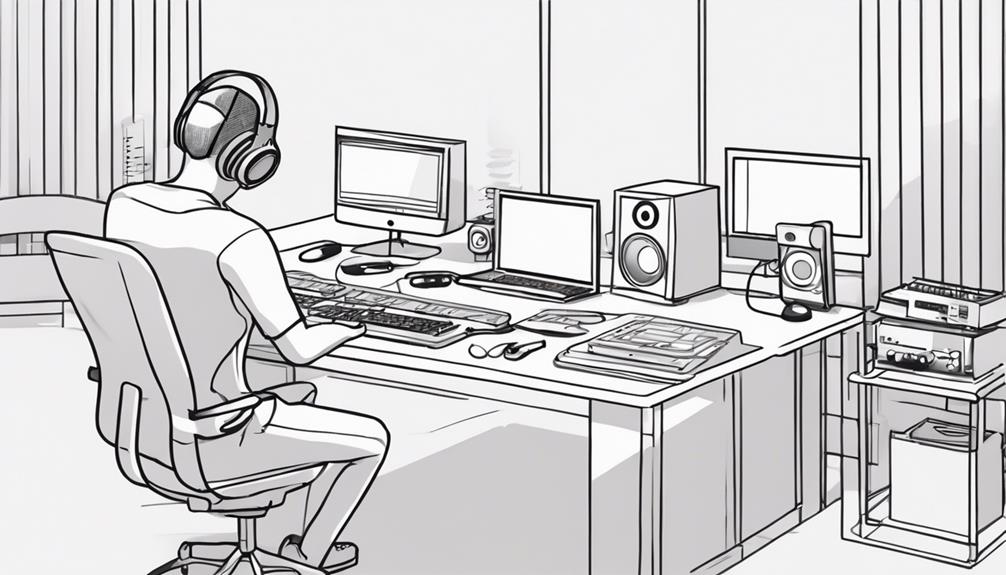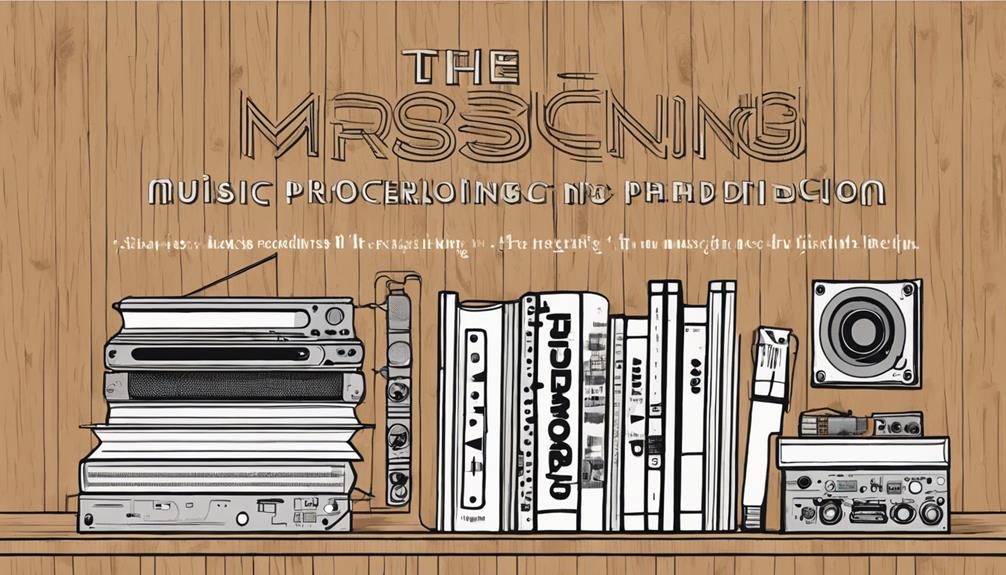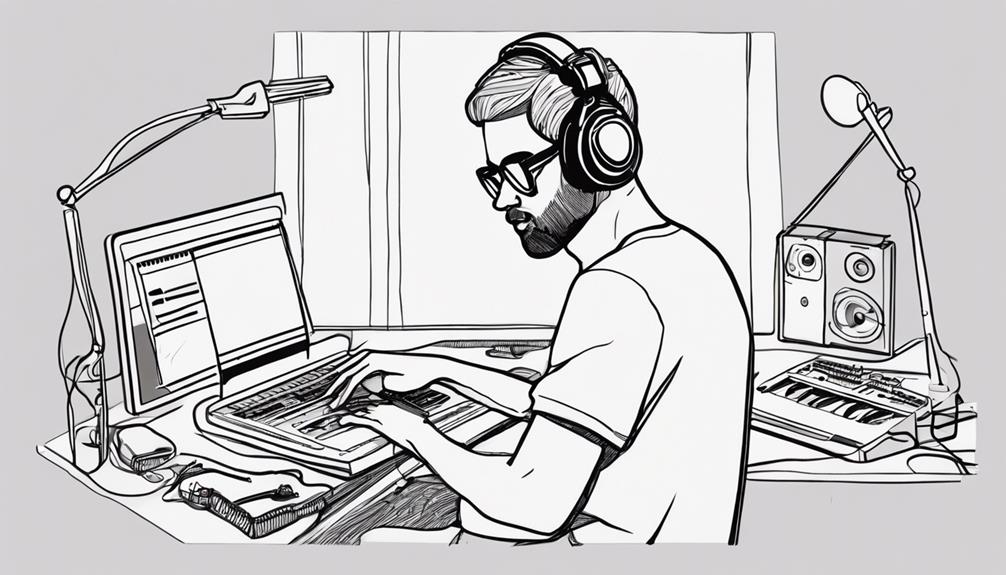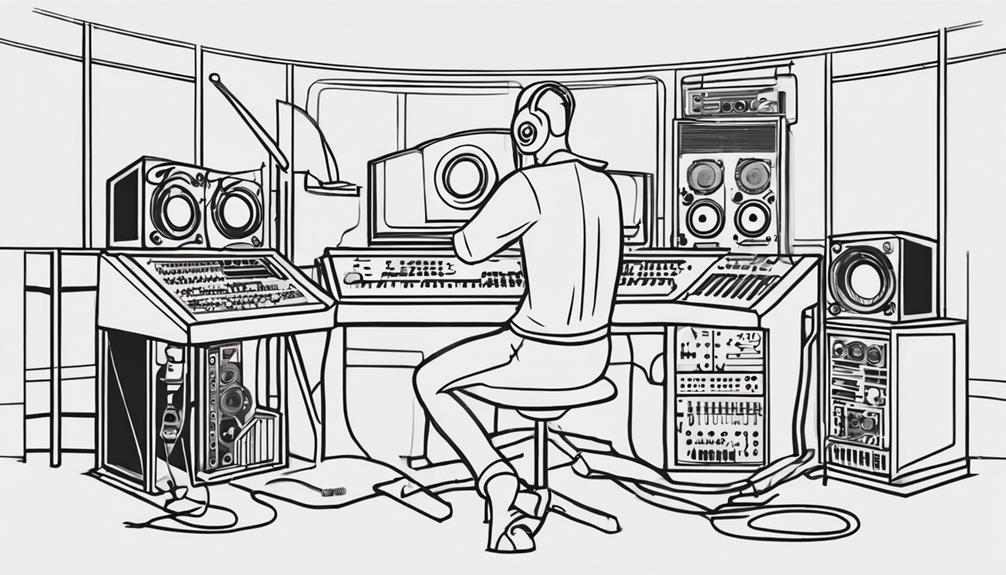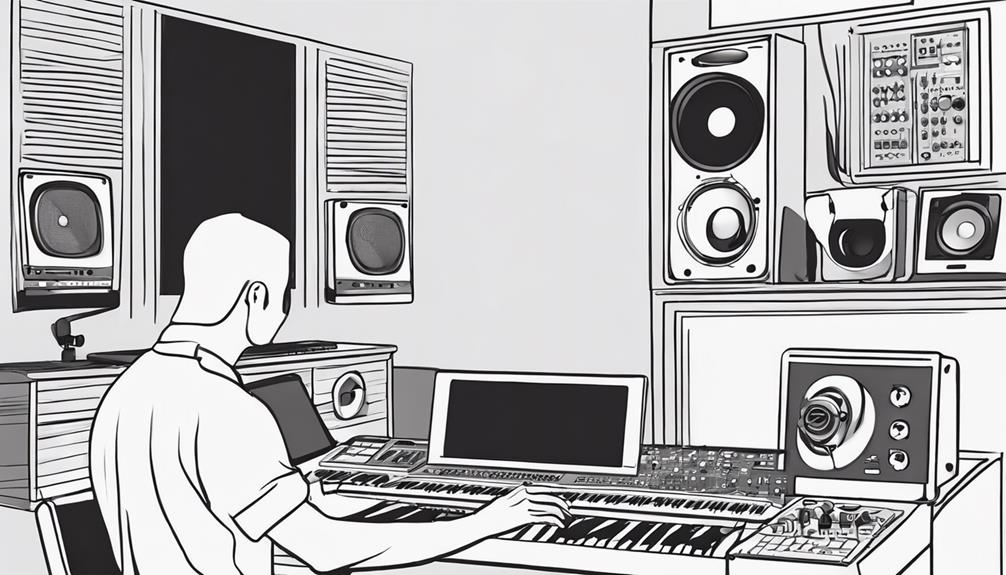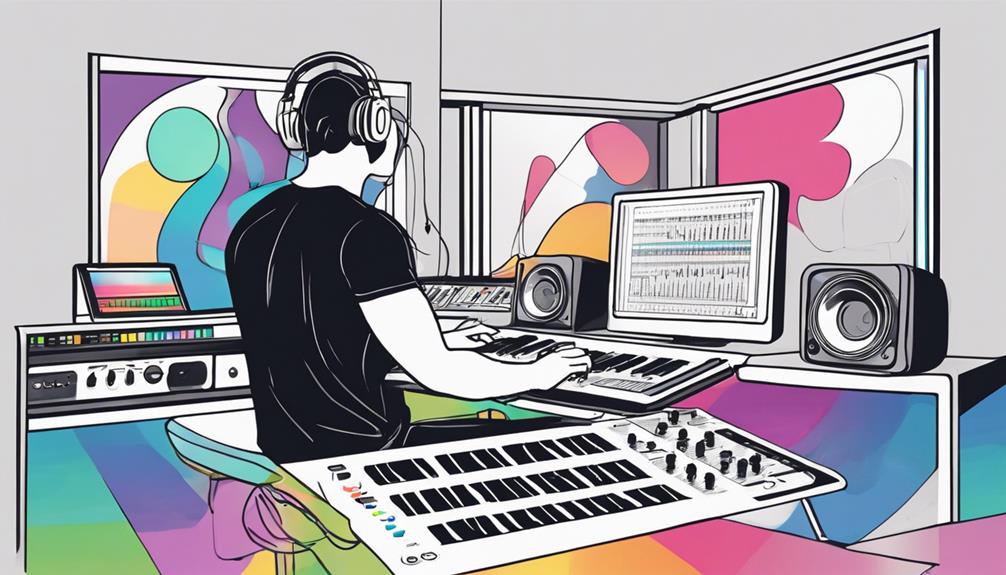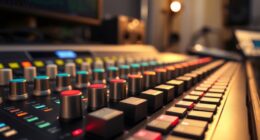To kickstart your music production journey, make sure you have a computer, DAW, studio monitors, audio interface, and MIDI controllers. Learn the stages: songwriting, production, and core principles for a structured workflow. Record synthesized virtual instruments and experiment with sonic palettes using MIDI controllers. Capture external sounds with quality microphones, explore live recordings, and enhance creativity with hardware synthesizers. Get familiar with audio editing basics: timing, noise removal, volume adjustments, cutting, copying, and pasting using tools like Audacity or GarageBand. This guide simplifies the process and opens up a world of music production possibilities for you! As you progress, dive deeper into mixing and mastering techniques to polish your tracks and achieve a professional sound. Understanding effects such as EQ, compression, reverb, and delay will take your creations to the next level. By following a step by step music production approach, you’ll build confidence and refine your skills, transforming your musical ideas into fully produced tracks. With consistent practice and experimentation, you’ll uncover your unique style and workflow that sets your productions apart. Once you feel confident in your workflow, don’t hesitate to share your knowledge and creative process with others—why not make a music production video to inspire and educate fellow enthusiasts? By documenting your journey, you’ll not only help others but also solidify your understanding of the craft while building a community around your music.
Key Takeaways
- Start by learning songwriting basics to lay a strong foundation for your music.
- Invest in essential gear like a computer, DAW, and quality headphones for music production.
- Understand the stages of music production from songwriting to finalizing the track.
- Experiment with recording virtual instruments and external sounds for creative versatility.
- Master audio editing basics to refine tracks, adjust timing, and enhance overall audio quality.
Essential Gear for Music Production
When starting out in music production, acquiring essential gear like a computer, Digital Audio Workstation (DAW), and studio monitors is pivotal for setting up your home studio. These foundational tools form the backbone of your music production setup, allowing you to record, mix, and produce music with professional quality.
In addition to these basics, investing in an audio interface, microphones, MIDI controllers, virtual instruments, and quality headphones will further elevate your music production capabilities.
Studio monitors play an important role in providing accurate sound representation, enabling you to make informed mixing decisions. High-quality microphones are necessary for capturing pristine audio recordings, ensuring that your tracks sound polished and professional.
MIDI controllers, such as keyboards, offer tactile control over virtual instruments, enhancing your creative workflow. Virtual instruments expand your sonic palette, providing a diverse range of sounds for your music projects.
Lastly, quality headphones are essential for detailed monitoring during recording and mixing sessions, allowing you to fine-tune your tracks with precision.
Stages in Music Production
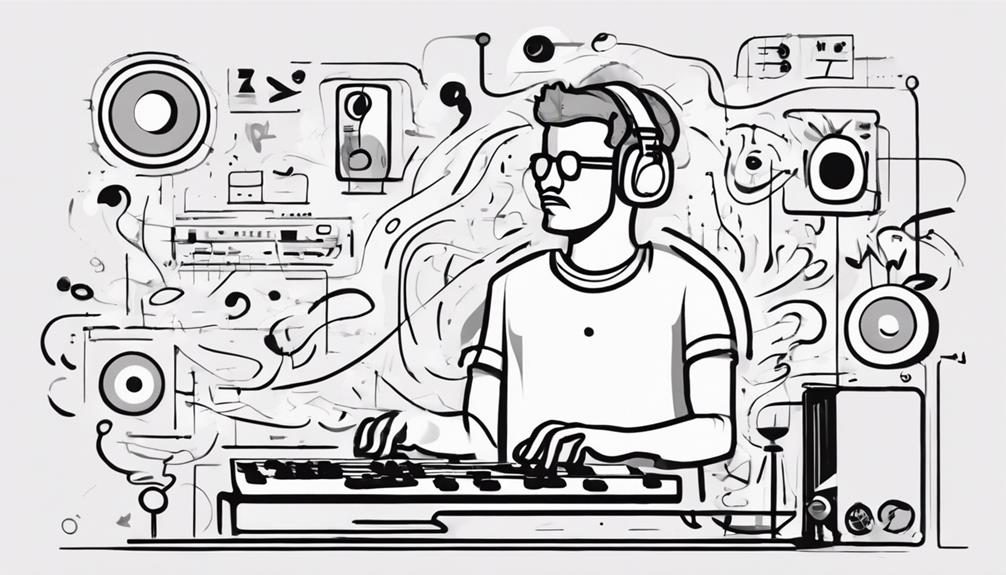
To navigate through the intricate process of music production effectively, understanding the distinct stages involved is essential. Here are some essential points to keep in mind:
- Songwriting: This initial stage sets the foundation for the track's overall sound and message.
- Production Process: Production can enhance existing songs or be intertwined with songwriting to shape the final piece.
- Digital Audio Workstation (DAW): Setting up a new session in a DAW is vital for organizing and manipulating audio elements.
- Core Principles: Learning the fundamental principles of songwriting separately can greatly improve your music production workflow.
- Well-Structured Workflow: Understanding the different stages in music production helps in creating well-structured and cohesive musical pieces.
Recording Virtual Instruments
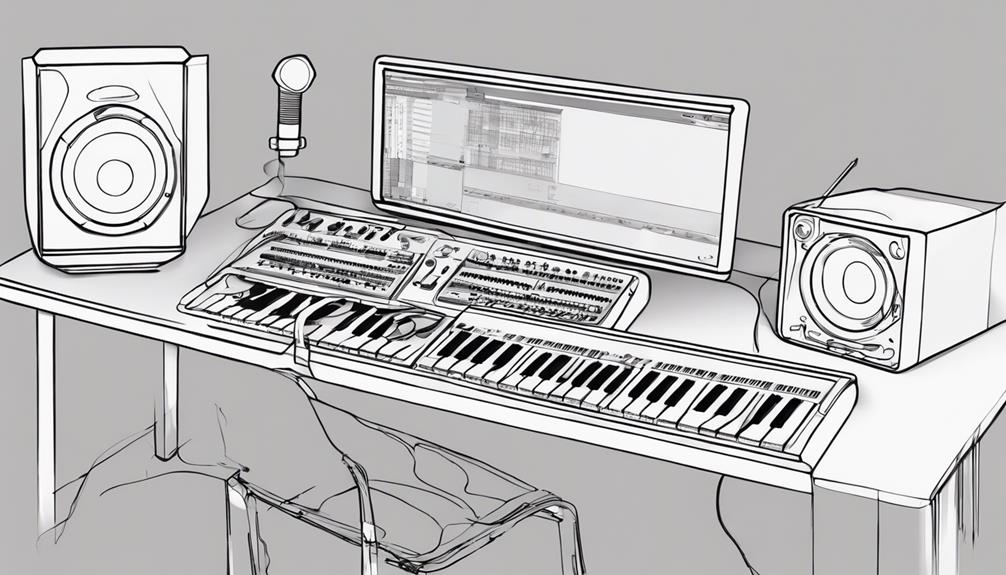
Recording virtual instruments in music production involves capturing the output of software-based instruments within a Digital Audio Workstation (DAW).
These instruments can be either synthesized virtual instruments, which generate sounds electronically, or sample-based instruments that use pre-recorded audio samples.
Virtual instruments provide a vast array of sounds and textures, enabling creative experimentation in music production.
To interact with virtual instruments, MIDI controllers are frequently used, offering a tactile and expressive way to play and control the software within the DAW environment.
Incorporating virtual instruments into your production can elevate the depth and richness of your tracks, enhancing the overall sonic palette.
Whether you're looking to add orchestral elements, electronic beats, or experimental textures, virtual instruments offer a versatile toolset for crafting your music in the digital domain.
Experiment with different virtual instruments and MIDI controllers to discover new sounds and expand your creative horizons in music production.
Recording External Sounds
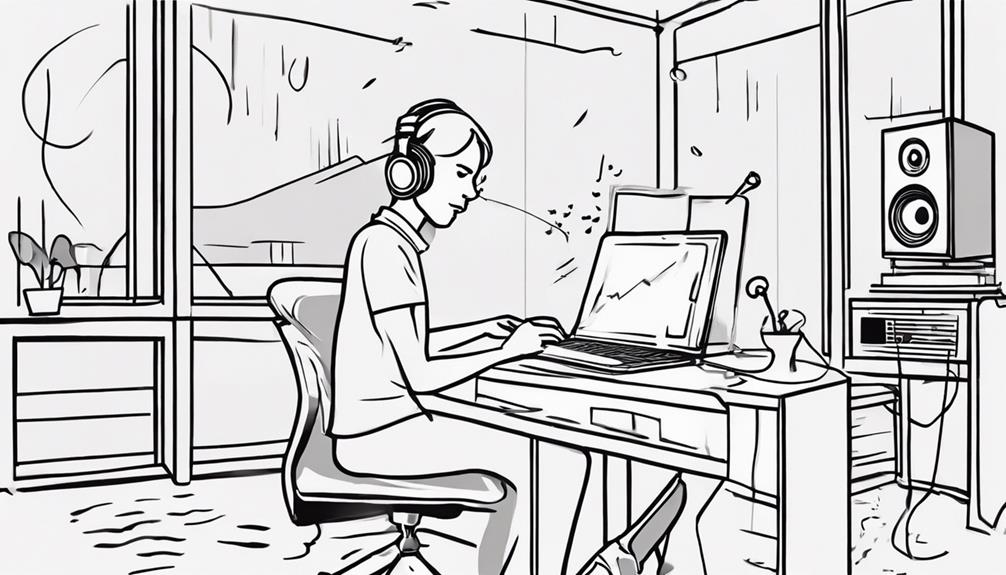
Capturing external sounds, such as vocals and hardware synthesizers, adds authenticity and depth to your music production. To enhance your tracks, consider the following tips:
- Utilize high-quality microphones and audio interfaces for crisp recordings.
- Incorporate live recordings of external sounds to introduce a unique organic element.
- Experiment with different recording techniques to find what complements your production style best.
- Enhance the overall production value and creativity of your music by integrating external sounds.
- Embrace the versatility of hardware synthesizers and explore the endless possibilities they bring to your tracks.
Basics of Audio Editing

When it comes to music production, mastering the basics of audio editing is essential to refining your tracks and achieving a polished sound. Audio editing involves tightening timing to guarantee your beats are in sync and structuring songs for a seamless flow. It plays an important role in removing unwanted noise, adjusting volume levels for consistency, and enhancing the overall audio quality of your music.
Common techniques like cutting, copying, pasting, and fading are vital tools in the audio editing process. Utilizing software such as Audacity, Adobe Audition, or GarageBand can help beginners navigate the world of audio editing more efficiently. By understanding the fundamentals of audio editing, you can effectively polish your music tracks, creating a professional and engaging listening experience for your audience.
Frequently Asked Questions
How Do I Teach Myself Music Production?
You can teach yourself music production by familiarizing with a DAW, exploring online tutorials, experimenting with different genres, joining communities, and practicing consistently. Be patient, embrace mistakes, and enjoy the journey of learning and creating music.
How to Become a Music Producer for Beginners?
Start by immersing yourself in music production basics. Experiment with various genres, collaborate with others, study music theory, and stay updated on industry trends. These steps will pave the way for your journey as a beginner music producer.
How to Produce Music Step by Step?
Start by setting up your equipment and software. Write your song, record vocals and instruments, then focus on mixing and mastering. Stay organized and follow a structured approach to produce music step by step for best results.
How to Start Music as a Beginner?
To start music as a beginner, choose a DAW like Logic Pro X. Explore tutorials for recording, mixing, mastering. Experiment with loops, samples, virtual instruments. Practice recording vocals, instruments. Join online communities for tips, feedback, and support on your music production journey.
Conclusion
To sum up, music production is an enjoyable and fulfilling adventure that anyone can undertake. By investing in essential gear, learning the stages of production, and mastering the basics of audio editing, you can create your own unique sound.
So grab your headphones, fire up your computer, and get ready to express your creativity in the world of music production.
Happy producing!

